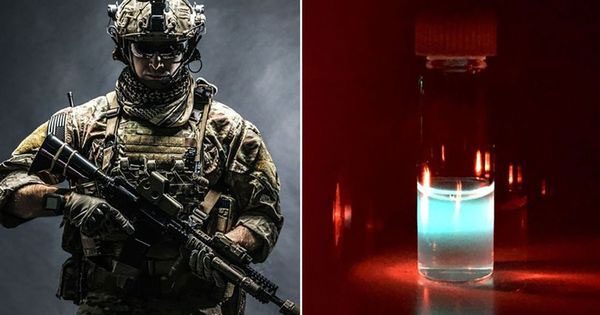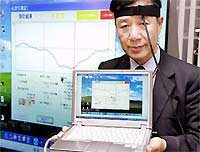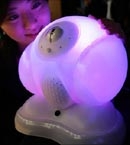A recent study conducted by scientists at the University of Massachusetts Medical School has shown that humans could potentially see clearly at night if nano particles are injected into their eyes, making this a likely reality.
The term “night vision” is often associated with bulky goggles worn by soldiers to see in the dark. Some research published in the journal Cell has revealed that these scientists have explained the specialized mechanism of the nano particles, which can enable human eyes to achieve capabilities similar to wearing night vision goggles.
Successful Experiments on Mice
Normal human eyes and those of most mammals can only detect light wavelengths from 400 nm to 700 nm. Devices that use near-infrared imaging, such as night vision goggles, work by detecting near-infrared radiation, which has wavelengths from 750 nm to 1.4µ.

The superpower of seeing through the night in science fiction movies may soon become a reality. (Image via Twitter).
To achieve this, the research team focused on analyzing a special type of nano material known as “upconversion nano particles” (UCNP). These particles contain rare earth elements erbium and ytterbium, which can help convert low-energy photons from near-infrared light into higher-energy blue light that can be seen by the human eye and other mammals.
The research team then injected these UCNPs into the eyes of experimental mice. This is where the nano particles would bind to receptor cells in the mice’s retinas. By measuring electroretinogram signals in the retina and obtaining potential signals in the visual cortex of the mice, the researchers found that both the retina and visual cortex of the mice were activated by near-infrared light.
Additionally, the research team conducted behavioral tests to confirm whether the mice could see near-infrared light. They placed the mice in a Y-shaped water maze, where one branch allowed them to escape. Both branches were equipped with lights, with the escape branch having a triangular light and the other branch a circular light.
After training the mice (which had been injected with nano particles and those controlled) to head toward the branch with the triangular light, the researchers replaced these lights with a near-infrared light source. In this case, the mice injected with UCNPs were still able to identify the correct branch to escape.
Mr. Gang Han, the lead researcher, stated: “The mice injected with nano particles could easily recognize the triangle and swim towards it, while the mice that were not injected could not see or recognize the difference between the two shapes.”
The research team also emphasized that the UCNPs would remain in the mice’s eyes for at least 10 weeks without causing any significant side effects. However, they still wish to conduct more experiments before injecting these nano particles into human eyes.
Superpowered Dogs and Breakthroughs in Infrared Astronomy
When discussing future plans, Mr. Han mentioned that this technology could be applied to service dogs.
He said: “If there is a dog with the superpower to see near-infrared light, we could shine light on criminals from a distance, and that dog would be able to identify the target without disturbing anyone else.”
In addition to creating superpowered dogs with night vision, the research team has a larger goal of applying these nano particles (through organic materials instead of rare earth elements) on humans.
With this goal, Mr. Han noted: “This technique could be applied beyond military fields and even in areas such as astronomy.”
He shared: “When we look into the universe, we can only see light waves. But with near-infrared vision, we will be able to view the universe in a completely new way. We may achieve the ability to observe infrared astronomy with the naked eye, or have night vision without the need for bulky equipment.”



















































